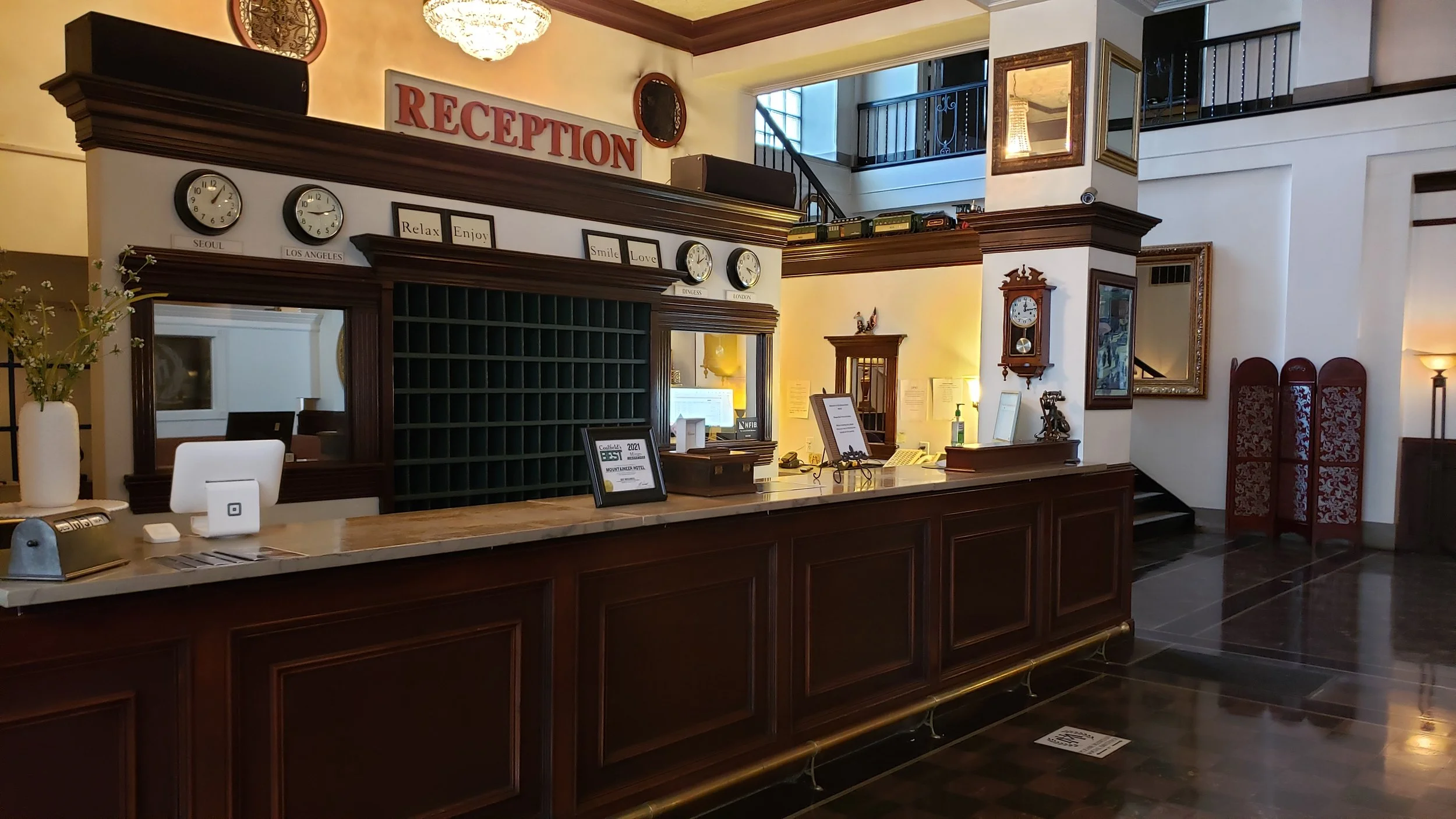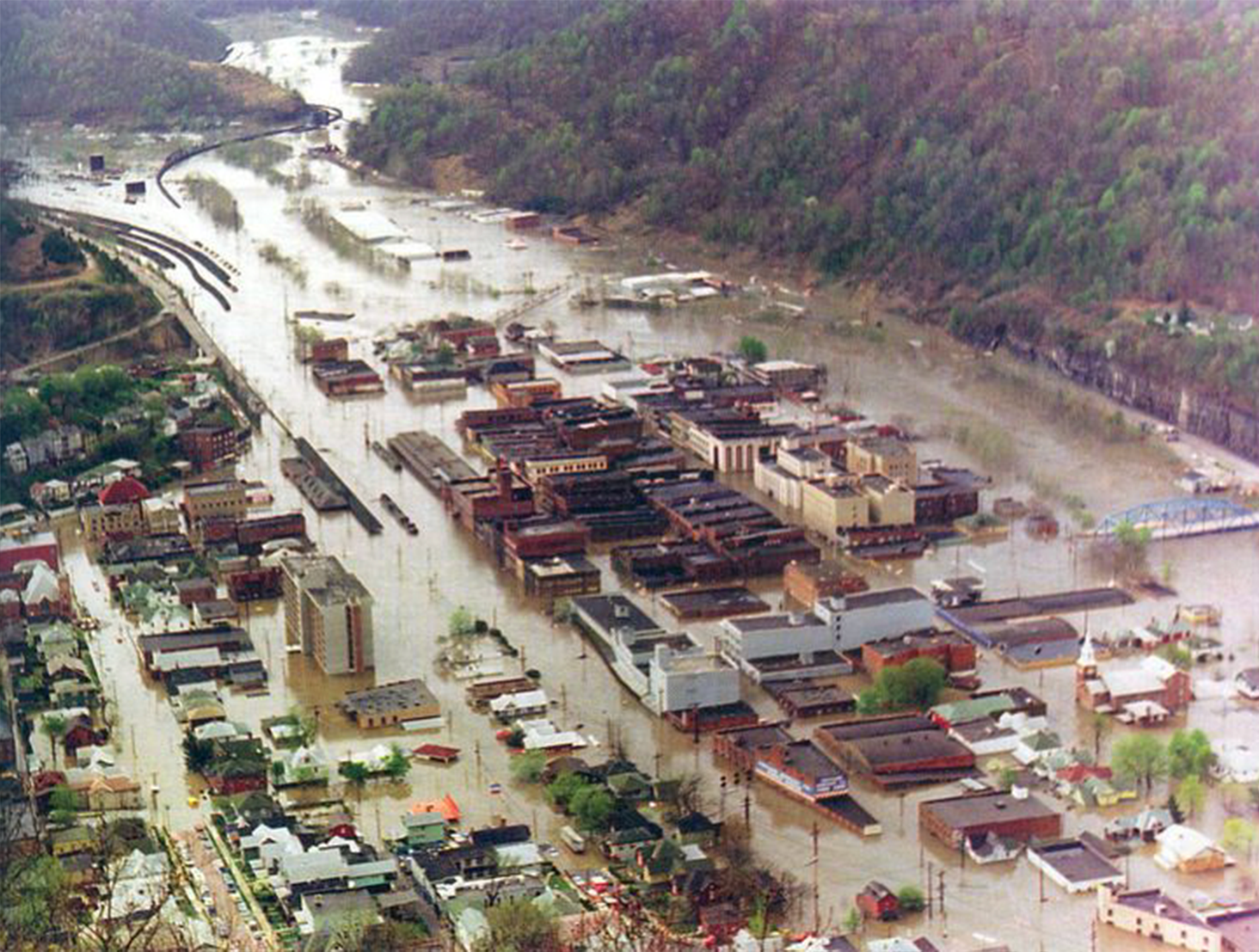THE MOUNTAINEER HOTEL
During this first half of the 20th century, billions of tons of coal flowed in and out of Mingo County by rail. To this day, Norfolk Southern Railroad maintains one of the largest train yards and shops on its system in Williamson, with over one hundred miles of track running through the city. In 1925 alone, the coal field produced in excess of 8,000,000 tons of "black gold."
With the booming coal industry and rapid population growth that led to other commerce, it became essential for Williamson to have a place to meet both economic and social needs. The desire to accommodate these needs resulted in the construction of The Mountaineer Hotel.
The Mountaineer Hotel was built in 1925 as a community project. In order to raise the necessary capital, stock was sold in the hotel corporation. The majority of stock was sold to the residents of Williamson. Final construction costs totaled $600,000 (calculating for inflation, that is greater than $8,000,000 today).
Well-known architects, Meanor and Handloser, designed the Hotel. It is a neoclassic style, drawing inspiration from the classical art and culture of Ancient Greece and Rome.
According to a Williamson Chamber of Commerce pamphlet published in 1931, the hotel boasted such amenities as "116 rooms with baths, adequate lobbies, ballrooms, private dining rooms and suites. In addition [it had] one of the finest restaurants in the state and [was] the mecca for tourists and the travelling public." The hotel also had electric elevators, laundry service, and the primary atraction was the glass chandelier that hung in the main ballroom. The list of community events held at the hotel, within the ballroom and conference rooms, ranged from cotillions and weddings to political rallies and club meetings.
Among the notables who lodged and made public appearances at the hotel were: President John F. Kennedy; First Lady Eleanor Roosevelt; Greer Garson, Dorothy Lamour, and Paul Newman, movie stars; and, June Carter-Cash, Jerry Lee Lewis, Loretta Lynn, Merle Travis, Conway Twitty, and Hank Williams, Jr., musicians. See a complete list of notable guests of The Mountaineer Hotel.
Moving into the second half of the 20th century, there was a perceptible change in the economic makeup of Williamson. With the advancement of mechanized coal production, jobs and people moved from the area. Although the railroad still maintained its large operation of machine shops and roundhouse, the population of the city and surrounding coal camps dwindled. The necessity of sustaining a community hotel was significantly reduced.
From April 2-5, 1977, heavy rain fell in the Appalachians. The National Weather Service reports that some areas in West Virginia received up to 15.5 inches of rain. This massive amount of rain caused the Tug River to rise to record-setting levels and overflow. Williamson, along with The Mountaineer Hotel, was one of the flood casualties. By April 5th, water had risen above 53 feet in downtown Williamson. Waters had reached the mezzanine level, fully encompassing the basement and lobby, of the hotel.
The hotel predominantly served as a railroad hotel in the latter part of the 20th century. Crews for incoming and outgoing trains would stay at the hotel. This stream of business kept the hotel occupied and in operation, even during a period of recession.
In December 1995, Mark H. Mitchell purchased the hotel and undertook the painstaking task of restoring it to original form and function. It has been transformed into a casual yet eloquate hotel that offers a superb location along with an ideal blend of traditional ambience, exceptional service, and modern convenience. The hotel now features renovated guest rooms, a beautiful lobby with Schonbek chandeliers (the same type of chandeliers that adorn The White House), modernized conference centers, and many other amenities that will meet guests' personal and professional needs.
Further, the hotel has been recognized as a prominent landmark in West Virginia and listed on the National Register of Historic Places. The hotel's registration form, which goes into more detail about its 90+ year history, can be found by clicking here.







